Unlearning and Other Jedi Mind Tricks – Finding the (Creative) Force
I believe the greatest calling of an educator is to inspire one’s students to want to wonder and learn about things on their own, and to point them in the direction of tools (hardware, software, and mindware) they can use to facilitate their respective (life-long) learning pursuits. One perception of our responsibility is to prepare the youth under our influence for “the future“.
I’ve always considered “the future” to be esoteric at best and completely uncertain and unpredictable at worst. I admire those who self-identify as “futurists” – they always seem to be living on the cusp and, through careful analysis of trends and expertise in emerging technologies manage to assemble an impressionistic vision of what is surely to come. But, with our increasingly disappointing lack of time travel abilities, we must in this matter turn to the affirmations of Yoda:
What we can do is learn from the past (as a former history teacher I tend to go this route) and pay close attention to the now. One thing we can confirm is that at present, technology has overwhelmingly changed the way we work. I’m personally interested both in the shift to a “gig economy” and small-scale entrepreneurship as well as the increased automation of tasks. To quote Harold Jarche,
“…this is a post-job economy we are moving toward. We cannot stay tied to the concept of the job as the primary way to work”
I believe, like Harold, we are moving rapidly to a creative economy – one that is fluid and flexible, and one that will require workers to constantly shift roles and positions. That means constantly learning. That means constantly creating. Jarche cautions us to “identify what you can automate before the machines do”…and to ultimately
“make work more human”
Unfortunately, cultivating the essence of being human– a sense of wonder and beauty, persistent curiosity, creative thinking, self-awareness, compassion and empathy too often fall by the wayside in our schools and the organizations in which we work.
Some thought leaders have recognized this and extol the virtues of creativity. There are a lot of buzz words bantered about, but like any nuanced facet of humanity, it’s not that formulaic.
Whilst many agree that we need “more creativity” as if it were “more paper clips” or “more coffee filters” are we willing to take the time to understand how creativity works and figure out how to do it?
One thing we can pin down for sure is the feeling we get when we’ve made something. I often include this in my talks – there is something Harvard researchers have identified as “The Ikea Effect”. This study showed that we value what we make ourselves – a sort of Labor=Love mentality. As simple as assembling a piece of Ikea furniture is (ha ha!), it still means more to “DIY” than if we had just purchased a pre-fab item.
This self-satisfaction may apply to anything from a question we posed to a community, a piece of digital storytelling we crafted, a solution we designed, or an innovation we developed. It can be as simple as a sketch I make for my slide decks (I notice when they are made with my own artwork I tend to love them more) to an outfit my daughter puts together on her own. That’s just it – many have the notion that creativity is synonymous with artistic talent, and they freak out when they are asked to be “creative”…
Thinking this way snowballs into an extreme lack of creative confidence. We feel we our work is unworthy before we even begin. Or worse – we feel we have to wait for inspiration before we can start on a creative project.
Holding out for the muse to show up is never going to get you anywhere. She is a really bad date – totally unreliable and fickle if she ever does bless you with her affections. What we need more is a creative “kick in the pants”. As Picasso says,
“Inspiration exists but it has to find you working”
Don’t underestimate the power of positive self-talk. I once heard, on a documentary called The Brain, that a major part of Navy Seal training (and subsequent success) is learning how to train the voices in our minds to be more encouraging and confident. International Space Station Commander Hadfield likewise claimed that celebrating “one small victory” every day would help one triumph over odds.
Speaking of odds…
Yes, it’s best you not even know them. Being concerned with what people think of you or your work, or the chances you have in succeeding with an idea, or – this is the worst – how much better other people are at what you are attempting is only going to inhibit what can possibly come out of you.
Fear leads to the Dark Side
That being said, you might want to figure out something that sets you and your creative work apart from the masses. With our increasingly democratized access to media creation tools and distribution channels, being good or even great is not good enough.
Harold Jarche shares some of this in a blog post review of The Hustle Economy. Dance artist Donna Salgado suggests
“there is more work out there but you need to shine and, more importantly, you need to work to get noticed”
Film editor Farah Khalid equates “fear” with “growth” – that the “Dark Side” when we feel uncomfortable is a much needed balance in the creative “Force”…lest we become stagnant.
Perhaps my favourite piece of advice highlighted by Harold is from Ben Grelle: “You can’t take one popular thing you make and ride it to success. You have to double your efforts and keep making cool things.”
The ability to reinvent yourself, to “kill your darlings” if needed, and to diversify and not adhere to one particular medium or style is, I think, at the crux of creativity.
One of the best things I’ve seen lately is “irreverent luxury-happy chic” design mogul Jonathan Adler giving a talk called
“Keep Other People’s Opinions Out of Your Creative Process”
(*note that he drops the F-bomb more than a few times in case you are in polite company)
Not only did he pursue his dream of becoming a potter despite the overt lack of confidence in his talents as exhibit by a professor/ mentor,
he thought beyond his schtick.
A successful business making whimsical, well-crafted pottery pieces was not enough…he wanted to expand his room..quite literally, by designing rooms and everything in them. Once he came to grips with his mission – his point of view, or rather what he stood for, then every type of product could be seen through that lens – pillows, rugs, lighting…everything from sofas to sunglass cases.
If we assert that
everyone is indeed creative,
then we can perhaps pinpoint some “Jedi Mind Tricks” and other habits to practice that may harness our innate creativity.
The first step is a sense of wonder. One way to promote thinking this way – or
something I refer to as “Wonderlust” –
is to be mindful of one’s surroundings and all the things your senses are taking in. I always suggest going on a “Wonder Walk”.
This doesn’t have to be wandering hither and thither – it can indeed have a goal, or some type of creative constraint (more about that later). Smartphone cameras are perfect for this, as they allow you archive slices of life and little vignettes – perhaps all in the same colour family, or telling some sort of story, evidence of mathematics, or a variety of textures found in the environment. If you don’t have a camera use a piece of paper with a small cutout as your “lens” to the life around you (it will help you focus on the little, poignant things).
Children naturally “beep” with a wow and a wonder when they encounter new things. Unfortunately, we tend to lose this as we age and are swept up into our demanding schedules. Don’t be afraid to marvel at life’s subtle pleasures and intricacies.
In order to do that, however you must
hone your skills of observation.
Be curious, stay in the question longer, take in different perspectives of things as well as people and processes. Examine things from all angles, if you can. And most importantly, listen. Never stop listening. Personally, I think drawing and doodling (I’m hesitant to describe what I do as “sketchnoting”) has increased my capacity to listen. One of my favourite games when dining alone is to eavesdrop on people’s conversations and try to visualize a quirky soundbite.
Next, it’s important that we
feel comfortable in a state of questioning.
This is a huge part of critical consumption (or what Howard Rheingold, referencing Hemingway, calls “Crap Detection“).
Nothing innovative ever came from passive acquiescence.
Challenge assumptions…“learn the rules so you can break them” (Picasso), and don’t take things at face value. The key is not to spiral into cynicism. Cynics are too busy complaining and not making. One of my most beloved quotes, in fact comes from James Murphy:
“the best way to complain is to make things”
So after you’ve deconstructed or assessed something, it’s important to move on – perhaps playing with ideas for a better solution.
One of the most tricky things of course is to find what I call “white space” (a term nicked from the design field). You need to schedule this in your day or your project timeline in order to have those sought-after “aha” moments.
For me, an incubation period is also necessary. This is when you step away from the creative endeavor and chill out or do something mundane – my top three favourites are swimming laps, cooking (in particular, making a roux), and driving (I don’t like to drive, but it seems my best ideas come to me when I’m driving). Doing mundane activities will, believe it or not, get those synapses firing. Just be sure to have something with you to pin those ideas down!
That brings us to tools.
Like the concept of mise en place in the culinary world, chefs of creativity must have a variety of tools at hand. Sometimes they are there to facilitate (such as a dream diary or notebook in which to record ideas). Occasionally, I think tools have the power to inspire new forms of creativity. I write about this “artist’s approach” to tools (particularly digital) in this post. And, as I tweeted today for #maythe4thbewithyou,
It’s important to achieve fluency with your creativity – that is, knowing which tool to use when..and WHY you opted for that tool (this applies not only to creating work but to sharing that work as well). Any good McLuhanite will know that the “medium is the message“…
Being willing to experiment and play – especially with new ways of accomplishing a task and alternative tools – is essential. This is the spirit of
Unlearning
If we are truthful with ourselves, we’ll admit that a lot of what we “learned” as youth is fairly obsolete now (I’m personally thinking of the hours I spent learning how to navigate through the Dewey decimal system, or memorize phone numbers, or how to write a proper check). Children today will be cast into an adulthood of constant flux…there is, even now, an exponential increase in what we might consider an “obsolete” skill or piece of knowledge. One of the best traits to have, therefore is
agility – a chameleon-like talent to quickly adapt to a new environment with new demands.
Being able to learn, unlearn, and re-learn anew will be imperative. Doris Lessing defines “learning” as when you “suddenly understand something you’ve understood all your life, but in a new way“. I think there’s some truth to that – that when you are able to remix a concept you have truly learned it. Thus, all learning should involve some aspect of creativity – whether it be thinking about something differently…
holding an idea askew, or making something tangible to bring life to knowledge.
Creativity inherently involves remix and “connecting the dots”.
The “dots” are all over…and we often have to reach far back in our mind closets to retrieve them. These metaphorical dots are bits of knowledge and experience we’ve gathered and stored over time. Much is learned in school, but I’d not hesitate to say that most is learned outside of traditional settings. This dot-connecting takes practice. It’s a balance of curating (“dot collection”), finding, sense-making, and associating. Partaking in “combinatorial play“, as Einstein deemed it, should be part of our training. For more ideas on specific strategies, you can check out my “50 Ways to Cultivate a Creative Habit” post.
Creativity as a concept is frequently misunderstood. If we are talking about dot connecting then we must acknowledge that all creative work is derivative – that everything is built upon the ruins of the past…that we “stand on the shoulders of giants” (Isaac Newton).
Having a creative mentor is so important – even if it’s not someone in your real life. My mentors include Picasso, Henry Miller, Anais Nin, Da Vinci, Munch, Lautrec, Hitchcock and Andy Warhol. We hang out when I study their works and creative processes, their letters, quotes, diaries and ephemera. There are living ones I haven’t met in person- (people like Austin Kleon, for example), and ones I have (Howard Rheingold, Alan Levine, and my grandmother, to name a few).
I think it’s crucial to identify your own creative influences and acknowledge them. As a consumer, it’s a great skill to be able to deconstruct a work and trace its creative lineage. It’s always best to provide attribution when you appropriate even the smallest elements. In the words of one of my favourite creators, Jean-Luc Godard:
“It’s not where you take things from – it’s where you take them to“
Another misconception about creativity is that it’s about freedom. There is nothing more frustrating than having open-ended chaos – no rules or conditions. While we don’t want something to be overprescribed…
(this is why I despise rubrics, by the way)…
We can thrive on conditions…rules…challenges…
Creative Constraints
Having some parameters to shape a creative task will actually make one more creative.
The way out of the “box” is via the shackles.
G.K. Chesterton says it brilliantly:
“Art consists in limitation. The most beautiful part of every picture is the frame”
When thinking about “framing” a challenge, why not thinking about providing a time constraint as well? That’s right,
Creativity should be scheduled
Again, this might seem like the opposite of how we should approach creativity…I mean, shouldn’t creative work be done “when we are in the mood”?
No.
The best strategy for me personally has been having designated times at which I drop everything I’m doing and do a simple creative task. Ideally it’s something enjoyable that I can whip out in a jiffy and feel accomplished – the Van Gogh notion of “making something good every day“. For larger or more complex creative projects I would suggest pencilling in an hour hither and thither throughout your daily calendar. Break the project into bite-sized, do-able components so that you will feel accomplished (I always equate it to the rush I used to get as a child when completing part of a 1000 piece puzzle).
Focus will yield “flow”
Let all the extraneous stuff whiz by – at least for a little while – while you are intent on fulfilling whatever you set out to create or think about. You have to know a little about yourself in order to make the most of this- for example:
what types of environments stimulate you or diminish your creativity?
what times of day do you seem to think and work best?
what types of interruptions are you able to ignore…and what types can you not?
Author and artist Henry Miller says, bluntly
“When you can’t create you can work”
It’s key to have other, more tedious aspects of the creative task at hand that you can tackle when the big work is difficult.
This metacognition is not only helpful for managing creative work, but for generating it as well.
How prone are you to “Go with your gut”?
Intuition is perhaps one of our most overlooked ways of knowing. We second guess ourselves into inaction..we strive for a perfection that impedes our process.
I tend to be a bit risky in that I opt for the “one take” method …I figure that my most authentic work is the first try. That is not to say that I don’t believe in revision or improvement. Practicing my sketching every day has, indeed, made me more artistically skilled. The first idea in a team meeting is not always the best…but it could be the best springboard. Overthinking leads to a lot of needless talking and detracts from the doing. Why not just make it? Iterate…and assess and revise later? To paraphrase some Druid wisdom:
miss your mark so you can find your target.
In an atmosphere of trust (working by yourself or in a mutually respectful team),
the visceral is valued
That brings us to the subject of feelings in general. Creativity – at least the kind I like – is borne from emotion. We can be creative for money (and there is nothing wrong with that), but
at its heart IS heart.
We want our work to touch people- to make them think or move them in some way. This is true for painters, poets, or product designers.
Confession: last night I sat alone and read the St. Crispin’s Day speech from Shakespeare’s Henry V out loud and cried…real tears…all by myself. That is the power of creativity…his careful quilting of words, symbols embedded with emotional weight…transcended the hundreds of years between us and touched me to the point of tears.
We need people to work with us and spark us on – a creative posse, if you will. We also need ears to hear our poetry and music…eyes to view our paintings, bodies to wear our clothing designs, hands to implement our tools and minds to embrace our ideas. That is, we need an audience. Perhaps not for every creative endeavor, but I think for most of them.
For me that is the feedback fuel. It’s all I need to push on further. Even if my work makes a difference in just one person’s life, it is worth it. But we also need, as Austin Kleon points out in his wonderful Show Your Work, people who love us for ourselves, not our work. These are the ones you count on when the going gets rough.
Oh, and there will be dark times. Times when you fall flat on your face. Times when you just can’t think of any more ideas and “staring off into space” seems like a great career. Times when someone else gets a better break or seems to have it so much easier. Times when you wish you hadn’t shared anything at all. Times when you question your very essence …who you are and what the heck are you doing?
But more than half of it is convincing yourself (you are your worst critic to be sure). You see, there’s something called the “stereotype effect”. Usually that is an unsavory concept but when it comes to creativity- maybe not. This study by Dumas and Dunbar proved that “buying into the notion” of being a highly creative person (like an “eccentric poet”) actually increased one’s creative potential. “If you build it they will come”… if you clap Tinkerbell will be real…if you believe it it will be true…
Well, then there are the disbelievers (sometimes that is you!). The haters. I tend to think
if you are hating you are not creating
I mean, if you have the time for one, why not the other? I have a simple rule…I don’t explain myself or my work…I’ve adopted Henry Miller’s
“Paint what you like and die happy” approach
Perhaps Beyonce says it best with “I twirl on my haters”.
If someone lashes out about my creative work, I simply make more work.
If I lash out on myself, I definitely make more work.
If I feel jealously creeping in (because there is always someone more brilliant), I make more work.
Eventually, as Ira Glass explains in this video, you will bridge the gap and get there.
And leaving something of value to the world…even the smallest contribution to beauty or poignancy or usefulness…is totally worth it. Since I’m sampling from Star Wars (mostly A New Hope) I’d be remiss if I didn’t quote George Lucas:
“The secret is not to give up hope. It’s very hard not to because if you’re really doing something worthwhile I think you’ll be pushed to the brink of hopelessness before you come through the other side”
…and may the (creative) Force be with you.


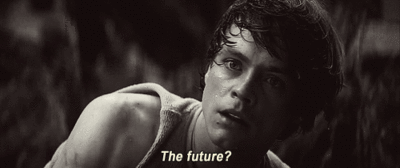
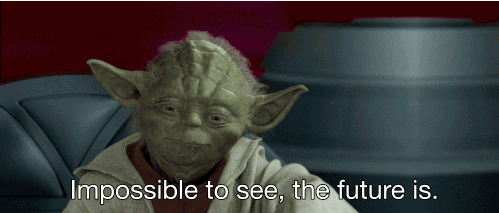
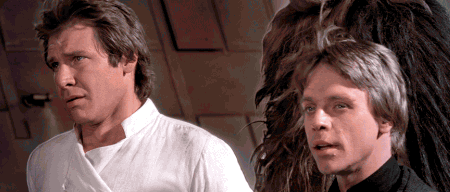


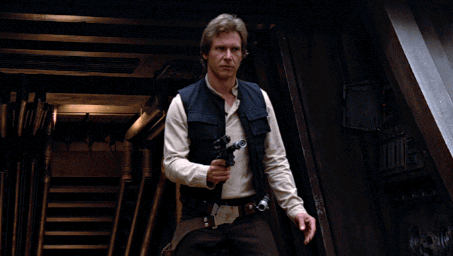
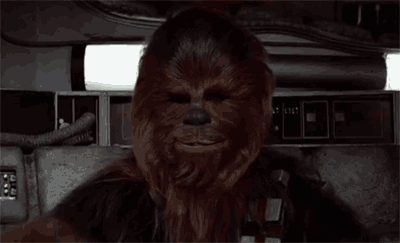
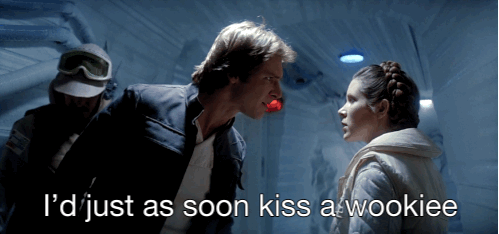

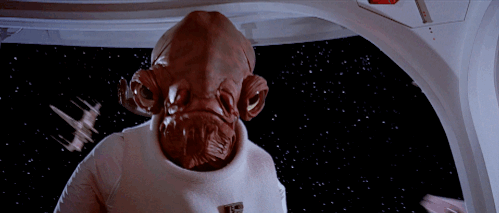
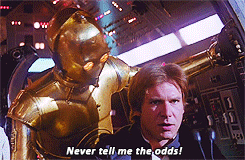
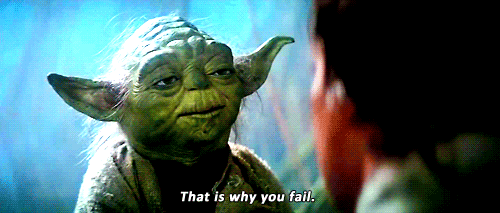

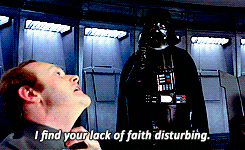

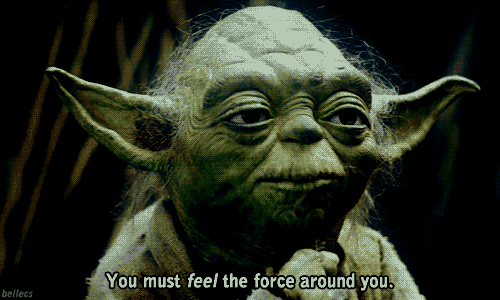


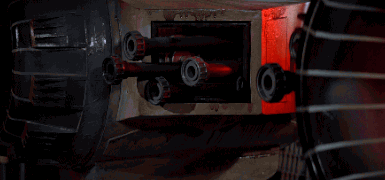
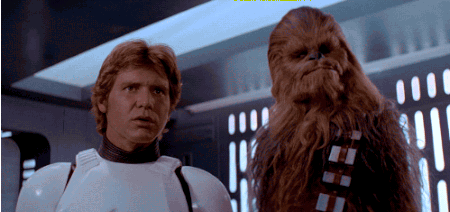
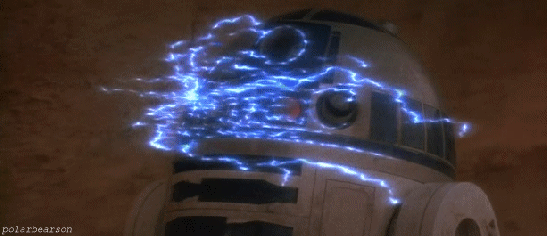
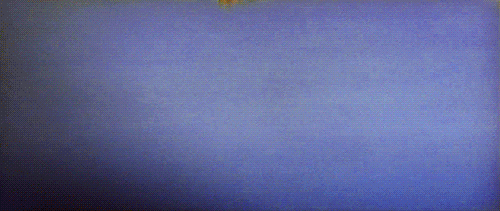

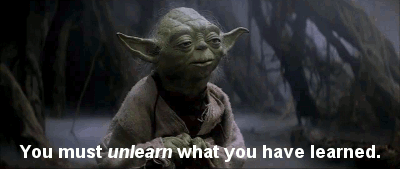

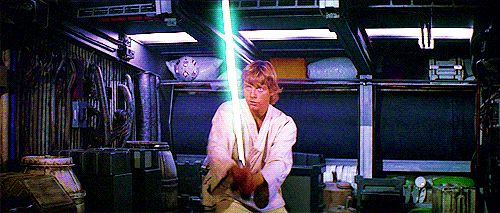


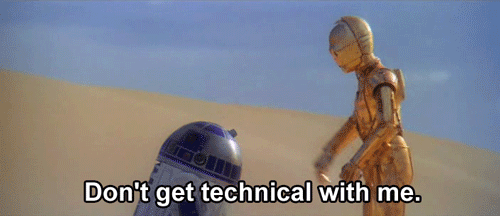
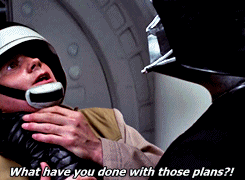


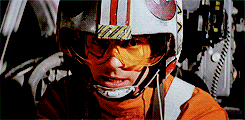
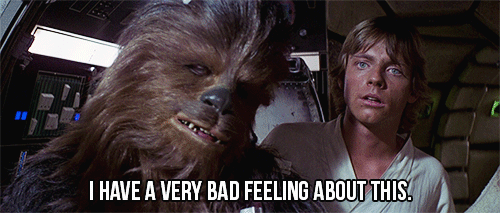
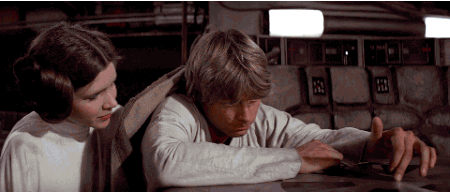

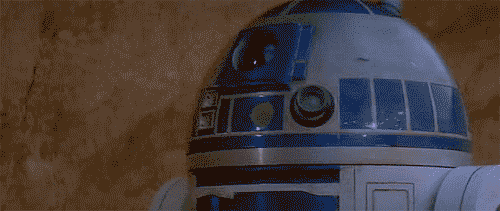
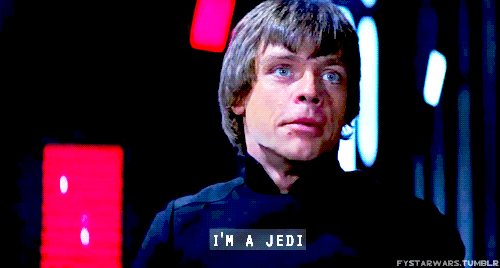

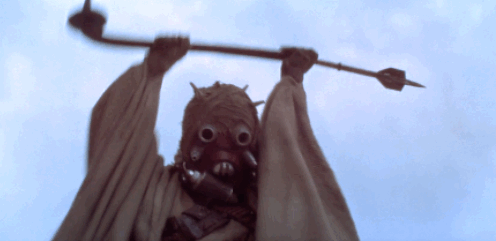
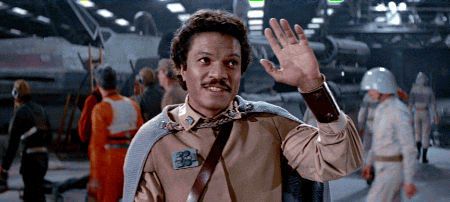
Pingback: Blog of the Week – 06 May, 2016 | Rhyddings Learning Power
Pingback: From Facts to ARTifacts: Balancing Content and Context in Technology-Assisted Assessment | AmusED
Pingback: Meaning from Madmen: Takeaways from the PBS Documentary “Art and Copy” | AmusED
Pingback: Ida Brandão Space for MOOCs
Pingback: math, mind tricks, vr art | Lectric Library
Wow, I’m inspired and in awe and about to make an hour to draw and write poems that have been brewing– but my judging mind had said “don’t spill these onto the page yet because they are not complete”– and creativity is not perfection. Now I’m thinking how can I make my AP lit class a place of creativity, letting go of the notion that we always have To DO… Kids need spaces like we do to live in a poem, experience one poem. Thanks for inspiring me to resist the urge to cover everything.
Thank you Trista – that is wonderful to hear! So glad this post was able to inspire. I love that expression “live in a poem”…maybe have a little niche area or a time frame set aside to do that “living in a poem”…now my mind is racing as to what one would call it. Keep me posted!
Pingback: #MobileSapiens: A Creative Safari | AmusED
Pingback: #rawthought: In Defense of Black Stars and Blue Hearts | AmusED